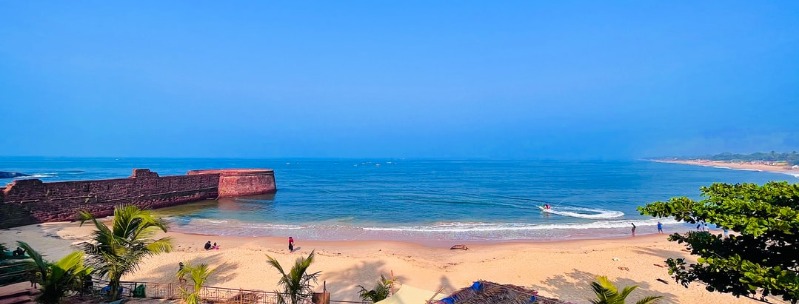India Beach Destinations 2024
Stretching from the frozen barrier of the Himalayas to the tropical greenery of Kerala, and from the sacred Ganges to the sands of the Thar desert, the country’s boundaries encompass incomparable variety.
India has almost a 6,000 km long coastline, which is home to some of the finest beaches in the world.
More and more holidaymakers are beginning to realize the numerous activities that the Indian beaches can offer together with their beautiful surroundings and making them their preferred destination.
Alappuzha Beach
Under its former appellation of Alleppey, Alappuzha , roughly midway between Kollam (85km south) and Kochi (64km north), is another romantic and historic name from Kerala’s past.
It was one of the best-known ports along the Malabar coast, and tourist literature is fond of referring to it as “Venice of the East”, but while it may be full of interconnecting canals, there the resemblance ends. Alappuzha is a bustling, messy town of ramshackle wood and corrugated iron-roofed houses, chiefly significant in the coir industry, which accounts for much of the traffic on its oily green-brown waterways.
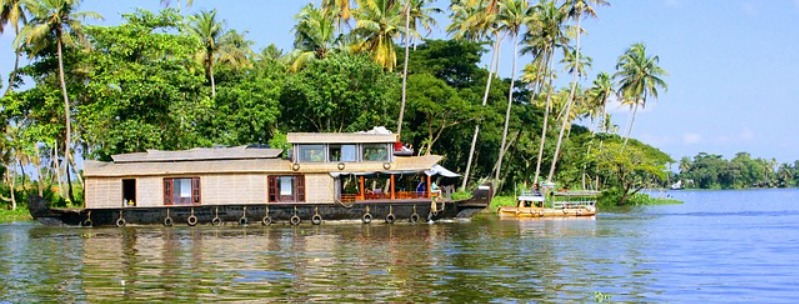
Despite its insalubrious canals, Alappuzha is prominent on the tourist trail as one of the major centers for backwater boat trips, served by ferries to and from Kollam and Kottayam in particular.
Most visitors stay just one night, catching a boat or bus out early the next morning. However, a short distance north the center, the congestion eases. You can walk along the lakeside under a shady canopy of palm trees, enjoying the extraordinarily slow pace of Keralan village life.
Anjuna Beach
With its fluorescent-painted palm trees and infamous full-moon parties, Anjuna , 8km west of Mapusa, is Goa at its most “alternative”. Fractal patterns and Day-Glo Lycra may have superseded cotton kaftans, but most people’s reasons for coming are the same as they were in the 1970s: drugs, dancing and lying on the beach slurping tropical fruit. Depending on your point of view, you’ll find the headlong hedonism a total turn-off or heaven-on-sea.
Either way, the scene looks here to stay, despite government attempts to stamp it out, so you might as well get a taste of it while you’re in the area, if only from the wings, with a day-trip to the famous flea market.
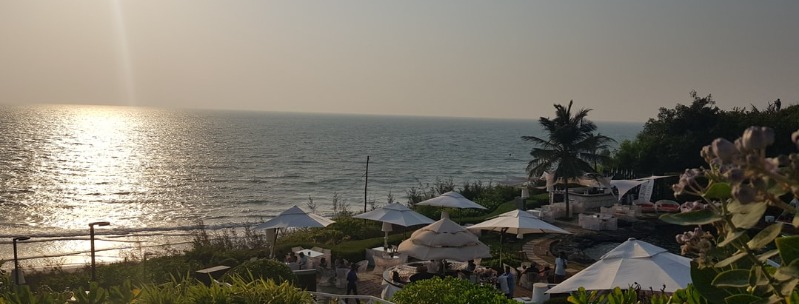
One of the main sources of Anjuna’s enduring popularity as a hippy hang-out is its superb beach. Fringed by groves of swaying coconut palms, the curve of soft white sand is safer for bathing than most of the nearby resorts, especially at the more peaceful southern end, where a rocky headland keeps the sea calm and the undertow to a minimum.
North of the market ground, the beach broadens, running in an uninterrupted kilometer-long stretch of steeply shelving sand to a low red cliff. The village bus park lies on top of this high ground, near a crop of small cafes, bars and Kashmiri handicraft stalls.
The season in Anjuna starts in early November, when most of the long-staying regulars show up, and peters out in late March, when they drift off again.
Whenever you come, keep a close eye on your valuables. Theft, particularly from the beach, is a big problem.
Baga Beach
Baga, 10km west of Mapusa, is basically an extension of Calangute; not even the locals agree where one ends and the other begins.
Lying in the lee of a rocky, wooded headland, the only difference between this far northern end of the beach and its more congested center is that the scenery here is marginally more varied and picturesque.

A small river flows into the sea at the top of the village, below a broad spur of soft white sand, from where a dirt track strikes across an expanse of paddy fields towards Anjuna.
Until the early 1990s, few buildings stood at this far northern end of the beach other than a handful of old red-tiled fishers’ houses nestling in the dunes. Since the package boom, however, Baga has developed more rapidly than anywhere else in the state and today looks less like a Goan fishing village than a small-scale resort on one of the Spanish Costas, with a predominantly young, charter-tourist clientele to match.
Calangute Beach
A mere 45-minute bus ride up the coast from the Goan capital of Panjim, Calangute is Goa’s busiest and most commercialized resort, and the flagship of the state government’s bid for a bigger slice of India’s package-tourist pie.
In the 1970s and early 1980s, this once-peaceful fishing village epitomized Goa’s reputation as a haven for hedonistic hippies.
The beach itself is nothing special, with steeply shelving sand, but is more than large enough to accommodate the huge numbers of high-season visitors.
Most of the action centers on the beachfront below GTDC’s unsightly Tourist Resort, where crowds of Indian women in saris and straw hats stand around watching their sons and husbands frolic in the surf.
To escape the melee of the main beachfront area, head fifteen minutes or so south, towards the rows of old wooden boats moored below the dunes at Maddo Waddo (literally “toughies’ quarter”, referring to the fishermen, who used to be very tough indeed before the relatively recent advent of the outboard motor).
Candolim Beach
Compared with Calangute, 3km north along the beach, Candolim (from the Konkani kandoli , meaning “dykes”, in reference to the system of sluices that the area’s first farmers used to reclaim land from nearby marshes) is a surprisingly sedate resort, attracting mainly middle-aged package tourists from the UK and Scandinavia.
Over the past five years or so, however, its ribbon development of hotels and restaurants has sprouted a string of multistory holiday complexes, and during peak season the few vestiges of authentically Goan culture that remain here are drowned in a deluge of Kashmiri handicraft stalls, luridly lit terrace cafes and shops crammed with postcards and beachwear. Long gone are the days when this was a tranquil bolt hole for burgundy-clad sanyasins from the Rajneesh ashram at Pune.
Now the beach where they used to hold yoga positions is lined with sun beds, parasols and shack cafes, and the surf sees more jet-skis and paragliders than fishing boats. On the plus side, Candolim has lots of pleasant places to stay, many of them tucked away down quiet sandy lanes and better value than comparable guesthouses in nearby Calangute, making this a good first stop if you’ve just arrived in Goa and are planning to head further north after finding your feet.
Immediately south, a long peninsula extends into the sea, bringing the seven-kilometer white sandy beach to an abrupt end. Fort Aguada, which crowns the rocky flattened top of the headland, is the best-preserved Portuguese bastion in Goa. Built in 1612 to protect the northern shores of the Mandovi estuary from Dutch and Maratha raiders, it is home to several natural springs, the first source of drinking water available to ships arriving in Goa after the long sea voyage from Lisbon. On the north side of the fort, a rampart of red-brown laterite juts into the bay to form a jetty between two small sandy coves. This picturesque spot, known as Sinquerim Beach, was among the first places in Goa to be singled out for upmarket tourism. Taj Group’s Fort Aguada resorts, among the most expensive hotels in India, lord it over the beach from the lower slopes of the steep-sided peninsula.
Colva Beach
A hot-season retreat for Margao’s moneyed middle classes since long before Independence, Colva is the oldest and largest – but least appealing – of south Goa’s resorts.
Its leafy outlying vaddos, or wards, are pleasant enough, dotted with colonial-style villas and ramshackle fishing huts, but the beachfront is dismal: a lackluster collection of concrete hotels, souvenir stalls and fly-blown snack bars strewn around a bleak central roundabout.
The atmosphere is not improved by heaps of rubbish dumped in a rank-smelling ditch that runs behind the beach, nor by the stench of drying fish wafting from the nearby village.
Kovalam Beach
The coastal village of Kovalam may lie just 10km south from Thiruvananthapuram, but as Kerala’s most developed beach resort it’s becoming ever more distanced from the rest of the state.
Each year greater numbers of Western visitors – budget travelers and jet-setters alike – arrive in search of sun, sea and palm-fringed beaches.
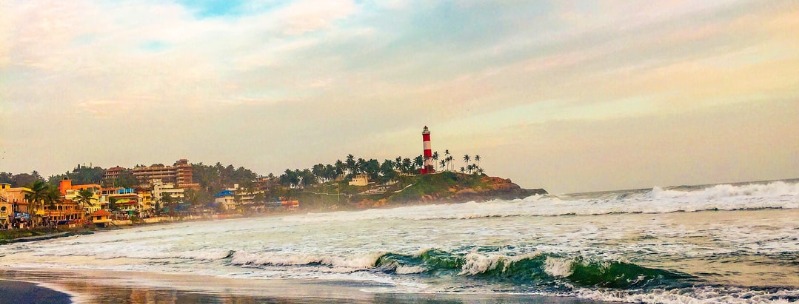
Kovalam consists of three main beaches; the southernmost, known for obvious reasons as Lighthouse beach, is where most visitors spend their time. Roughly ten minutes’ trudge through the sand from end to end (none of it is paved), it’s bordered with cheek-to-cheek low-rise concrete guesthouses and restaurants. The red-and-white lighthouse stands on the promontory at the southern end of the beach, but is closed to the public.
Hawah, the middle beach, overlooked from a rocky headland by the five-star Ashok resort, functions each morning as a base for local fishermen, who drag a massive net through the shallows to scoop up thrashing multi-hued minnows, singing and coiling endless piles of coir rope as they work.
North of the Ashok, though in full view of its distinctive sloping terraces, the final, northernmost beach, Samudra, is the least affected of all by the changing times, dotted with a few rudimentary wooden fishing vessels.
Palolem Beach
Palolem, 35km south of Margao, pops up more often in glossy holiday brochures than any other beach in Goa, not because the village is a major package-tour destination, but because its crescent-shaped bay, lined with a swaying curtain of coconut palms, is irresistibly photogenic.
Hemmed in by a pair of wooded headlands, it forms a perfect curve of white sand, arcing north from a pile of gargantuan boulders to the spur of Sahyadri Ghat, which tapers into the sea, draped in thick forest and studded with large black rocks.

Until relatively recently, this idyllic spot was south Goa’s best-kept secret. Over the past five or six years, however, Palolem has become a fully fledged resort, with shack-restaurants and palm-leaf huts lining the entire beach.
Around 1500 visitors stay here in peak season at anyone time, most of them independent travellers seeking an escape from the more commercial tourist scene further north. Their ranks are swollen by droves of day-trippers, both domestic and foreign, who travel down in minibus taxis or pleasure boats, and disappear again around sunset.
Vagator Beach
Barely a couple of kilometers of cliff-tops and parched grassland separate Anjuna from the southern fringes of its nearest neighbor, Vagator.
Dominated by the red ramparts of Chapora fort, Vagator’s broad white sandy beach – Big Vagator beach – is undeniably beautiful, spoiled only by the daily deluge of whisky-swilling tour parties that spill across it at lunchtimes.
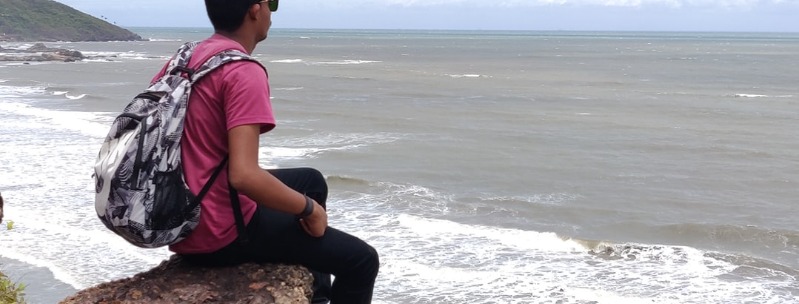
Far better, then, to head to the next cove south. Backed by a steep wall of crumbling palm-fringed laterite, Ozran (or “Little”) Vagator beach is more secluded and much less accessible than either of its neighbours. To get there, walk ten minutes from Big Vagator, or drive to the end of the lane off the main Chapora-Anjuna road, from where a footpath drops sharply down to a wide stretch of level white sand (look for the mopeds and bikes parked at the top of the cliff).
In spite of the Goan nudism laws, topless bathing is the norm; not that the locals, nor the odd groups of inebriated men that file past around mid-afternoon, seem in the least perturbed.
Like Anjuna, Vagator is a relaxed, comparatively undeveloped resort that appeals, in the main, to budget travelers with time on their hands. Accommodation is limited, however, and visitors frequently find themselves travelling to and from Baga every day until a vacancy turns up in one of the guesthouses
Varkala Beach
Long known to Keralans as a place of pilgrimage, Varkala, 54km northwest of Thiruvananthapuram and 20km southeast of Kollam, is drawing more and more foreign visitors, who see the beautiful beach and cliffs 1500m beyond the village as a quiet, unspoiled alternative to Kovalam.
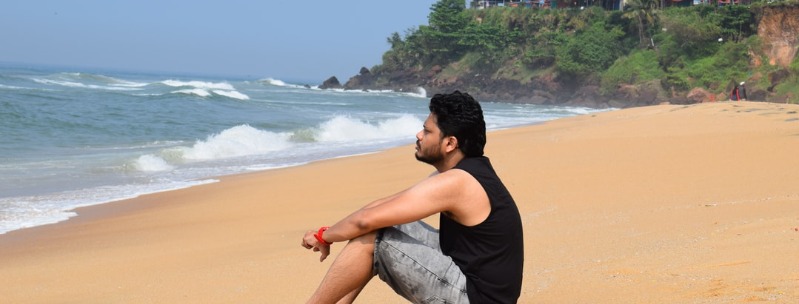
Known in Malayalam as Papa Nashini (“sin destroyer”), Varkala’s beautiful white-sand beach, Papanasam beach, has long been associated with ancestor worship. Devotees come here after praying at the Janardhana Swamy temple (said to be more than 2000 years old) to bring the ashes of departed relatives for “final rest”. Unlike in many temples in Kerala, non-Hindus are welcome.
Backed by sheer red-laterite cliffs and drenched by rolling waves off the Arabian Sea, Papa Nashini is imposingly scenic and still a relatively peaceful place to soak up the sun, with few hawkers and only the odd group of ogling men. Its religious significance means attitudes to (female) public nudity are markedly more conservative than at other coastal resorts in Kerala; bikinis don’t necessarily cause offence, but you’ll attract a lot less attention if you wear a full-length cotton sarong while bathing.
The best time to get here is between October and early March; during the monsoons the beach is virtually unusable.
